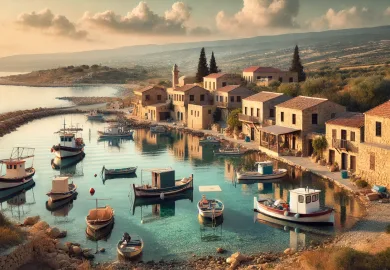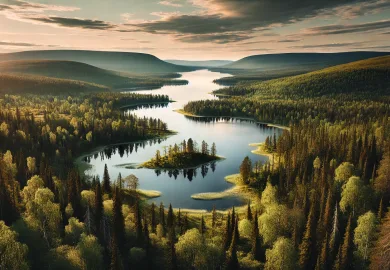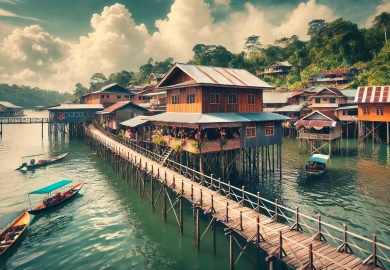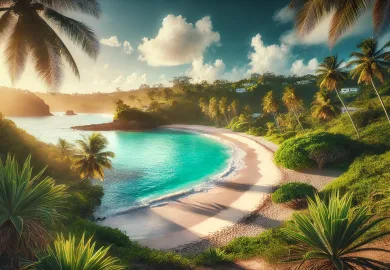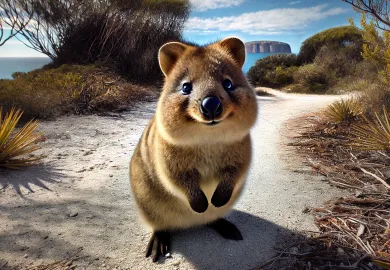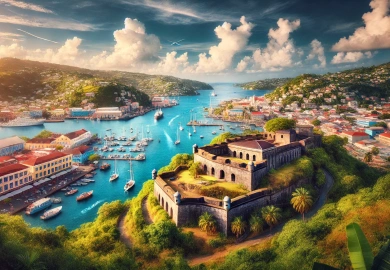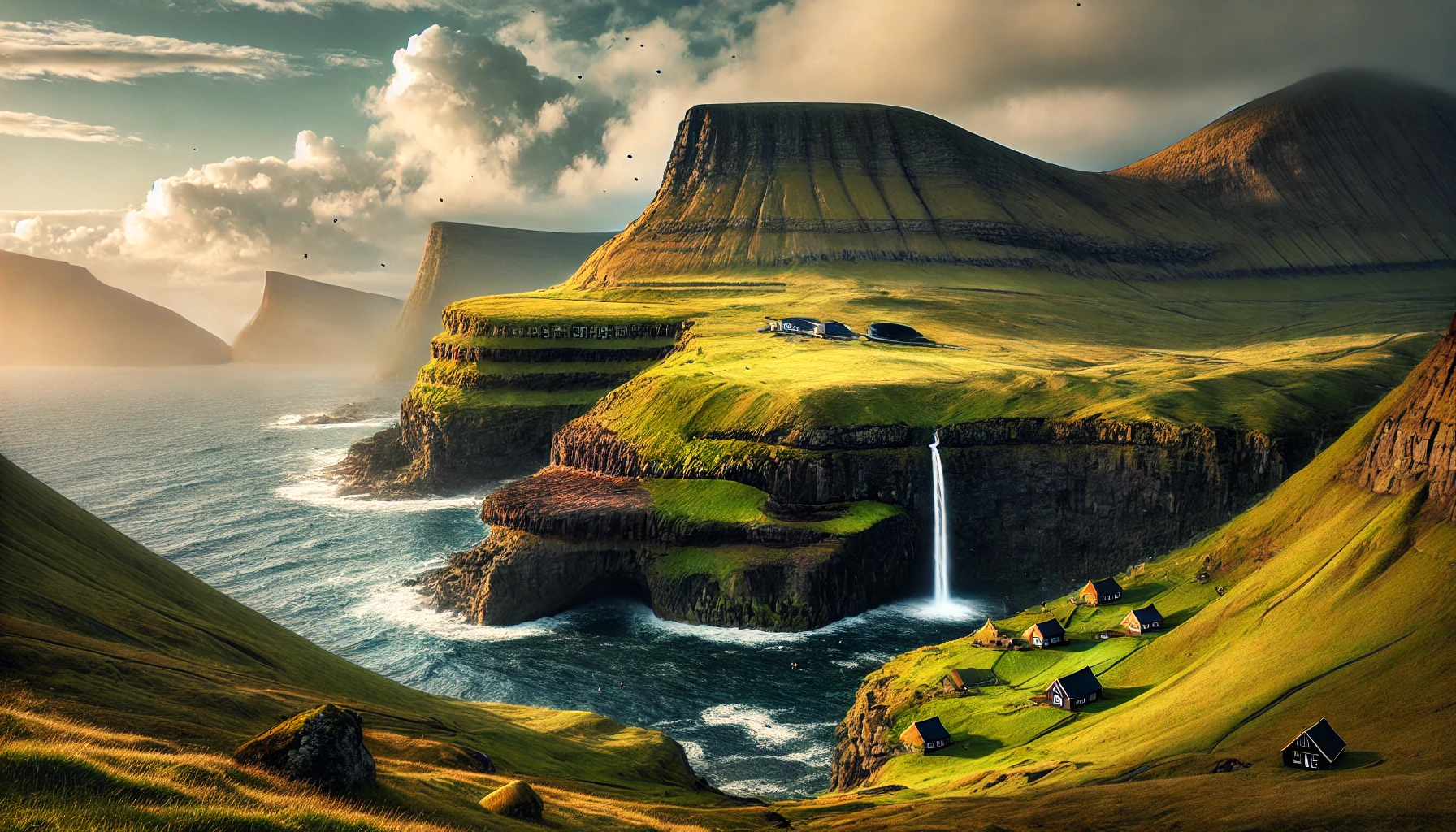
The Faroe Islands, a hidden gem in the North Atlantic, offers a unique blend of dramatic landscapes and serene beauty that captivates all who visit. With rugged cliffs that plunge into the sea and rolling green hills that stretch as far as the eye can see, the Faroe Islands is a paradise for nature lovers and adventurers alike. Nestled between Iceland and Norway, this archipelago of 18 islands presents a breathtaking setting where nature’s raw power and tranquility coexist in perfect harmony. Whether you’re hiking through lush valleys, standing atop towering cliffs, or simply taking in the panoramic views, the Faroe Islands promise an unforgettable experience.
Discovering the Dramatic Cliffs of Faroe Islands
The Faroe Islands are renowned for their dramatic cliffs, which are among the highest in Europe. These towering formations, some reaching over 800 meters above sea level, are a testament to the islands’ volcanic origins. One of the most iconic cliffs is the bird-cliff of Vestmanna, where visitors can witness the sheer scale of these natural wonders. The Vestmanna bird cliffs are not only visually stunning but also home to thousands of seabirds, including puffins, guillemots, and razorbills. This is a paradise for birdwatchers, with the cliffs offering a unique vantage point to observe these creatures in their natural habitat.
Exploring these cliffs offers a sense of awe and respect for nature’s power. As you stand on the edge, with the Atlantic Ocean crashing below, the vastness of the landscape can be overwhelming. The cliffs are a place of both beauty and danger, where the forces of nature are on full display. For the adventurous, there are boat tours that take you close to the base of the cliffs, offering a different perspective and allowing you to fully appreciate their majesty.
But the cliffs of Faroe Islands are not just about grandeur; they also tell the story of the islands’ geological history. Formed millions of years ago through volcanic activity, these cliffs are a window into the past, revealing layers of basalt that speak of ancient eruptions and the slow, relentless force of erosion. Whether you’re a geologist or simply a lover of nature, the cliffs of the Faroe Islands offer a glimpse into the Earth’s dynamic history.
Rolling Green Hills: The Heart of Faroe Islands’ Landscape
Beyond the cliffs, the Faroe Islands are characterized by rolling green hills that seem to stretch endlessly across the landscape. These hills, covered in lush grass and dotted with sheep, create a pastoral scene that is both peaceful and picturesque. The contrast between the rugged cliffs and the soft, undulating hills is one of the most striking features of the Faroe Islands, and it’s this diversity that makes the islands so unique.
The green hills of the Faroe Islands are a hiker’s paradise. With numerous trails winding through the landscape, there are countless opportunities to explore and connect with nature. One of the most popular hikes is the trail to Lake Sørvágsvatn, also known as the “floating lake.” This optical illusion makes the lake appear as if it is suspended above the ocean, and the hike itself offers stunning views of the surrounding hills and coastline.
These hills are also steeped in local culture and history. The traditional Faroese way of life is closely tied to the land, with sheep farming being a central part of the economy. As you hike through the hills, you’ll often come across stone cairns, which were used by early settlers to mark paths across the islands. These ancient markers are a reminder of the islands’ long history and the resilience of the people who have lived here for centuries.
The rolling green hills of the Faroe Islands are not just beautiful; they are also a testament to the islanders’ sustainable way of life. The sheep that graze these hills are an essential part of the ecosystem, helping to maintain the landscape and prevent overgrowth. This harmonious relationship between humans and nature is one of the reasons why the Faroe Islands remain so pristine and unspoiled.
The Best Spots for Scenic Views in the Faroe Islands
The Faroe Islands are home to some of the most breathtaking views in the world, and there are several spots that should be on every visitor’s list. One of the most famous is the viewpoint at Gásadalur, where you can see the village nestled in a valley surrounded by mountains, with a waterfall cascading into the ocean. This is one of the most photographed locations in the Faroe Islands, and for good reason. The combination of the dramatic cliffs, the rolling hills, and the tranquil village creates a scene of unparalleled beauty.
Another must-visit spot is the viewpoint at Eiðiskollur, located on the island of Eysturoy. From here, you can see the iconic sea stacks known as Risin and Kellingin, which are said to be the remains of a giant and a witch turned to stone. The view from Eiðiskollur is truly spectacular, with the sea stacks rising dramatically from the ocean, framed by the surrounding cliffs and hills.
For those looking for a more remote and serene experience, the island of Kalsoy offers stunning views from the lighthouse at Kallur. The hike to the lighthouse is relatively easy, but the reward is a panoramic view of the surrounding islands and the vast Atlantic Ocean. On a clear day, you can see for miles, with the green hills and rugged cliffs of the Faroe Islands stretching out before you.
Each of these viewpoints offers a unique perspective on the Faroe Islands’ landscape, highlighting the diversity and beauty of this remarkable archipelago. Whether you’re an avid photographer or simply looking to take in the scenery, these spots are sure to leave a lasting impression.
Wildlife Encounters in the Untamed Faroe Islands
The Faroe Islands are not only a haven for breathtaking landscapes but also for an array of wildlife that thrives in its untamed environment. One of the most iconic species found here is the Atlantic puffin, with its colorful beak and distinctive black-and-white plumage. These charming birds are most commonly seen between May and August when they return to the islands to breed. The cliffs of Mykines, the westernmost island in the Faroe archipelago, are particularly renowned for puffin sightings. A visit here offers the opportunity to observe these birds up close in their natural habitat, making it a must for birdwatchers and nature enthusiasts.
In addition to puffins, the Faroe Islands are home to other seabird species such as fulmars, guillemots, and gannets. The islands’ remote location and rugged terrain provide a perfect breeding ground for these birds, and the sight of thousands of them nesting on the cliffs is truly spectacular. For those interested in marine life, the waters around the Faroe Islands are teeming with fish, seals, and even occasional sightings of whales and dolphins. Boat tours offer an excellent way to experience this marine wildlife, providing a chance to see these magnificent creatures in their natural environment.
But it’s not just about the birds and marine life; the Faroe Islands also have a population of hardy, semi-wild sheep that roam the hills freely. These sheep are an integral part of Faroese culture, providing wool, meat, and a connection to the land that has sustained the islanders for generations. Watching these animals graze on the lush green hills adds another layer of charm to the landscape, reminding visitors of the simple, sustainable way of life that defines the Faroe Islands.
Exploring the wildlife of the Faroe Islands is a reminder of the delicate balance between humans and nature that exists here. The islands’ inhabitants have long lived in harmony with their environment, and this respect for nature is evident in the abundance of wildlife that still thrives in this remote part of the world.
Experiencing the Unique Culture and Traditions of the Faroe Islands
While the natural beauty of the Faroe Islands is undoubtedly its main attraction, the unique culture and traditions of the islands add depth to the experience. The Faroese people have a rich cultural heritage that has been shaped by centuries of isolation and a close relationship with nature. This is evident in everything from the traditional Faroese music, which is often performed in the form of chain dancing, to the vibrant knitting traditions that produce the famous Faroese sweaters.
One of the best ways to experience Faroese culture is by visiting during one of the islands’ many festivals. The Ólavsøka festival, held in July, is the Faroe Islands’ national holiday and is a celebration of Faroese culture, including traditional music, dancing, and rowing competitions. This festival provides a unique opportunity to see the Faroese people at their most joyous, celebrating their heritage with pride.
In addition to festivals, the Faroe Islands also offer a chance to experience the local cuisine, which is heavily influenced by the islands’ maritime environment. Seafood, especially fish and shellfish, is a staple of the Faroese diet, and dishes such as ræst (fermented fish) and skerpikjøt (dried mutton) offer a taste of the islands’ traditional food culture. Visiting a local restaurant or partaking in a traditional meal is a great way to connect with the islands’ culinary heritage.
The Faroe Islands’ culture is also deeply connected to its landscape. The islanders have developed a way of life that is in harmony with their environment, and this respect for nature is evident in their traditions and customs. Whether it’s through the sustainable practices of sheep farming, the reverence for the sea, or the celebration of their unique cultural identity, the Faroese people have managed to preserve their heritage in a way that is both authentic and welcoming to visitors.
Warm and Welcoming People
In Faroe Islands, one of the most cherished aspects that visitors frequently remark on is the warmth and hospitality of its people. The locals of Faroe Islands have a deeply rooted tradition of welcoming outsiders with open arms, a practice embedded in the culture for generations. This warm reception goes beyond just friendly smiles; it’s about genuine interest and respect, making tourists feel at home from the moment they arrive.
Whether in bustling cities or quaint rural villages, the people of Faroe Islands are known for going out of their way to make visitors feel comfortable. It’s common for locals to offer directions, share insights about hidden spots, or even invite travelers for a meal. This openness to strangers is not only a mark of respect but also a way to share their culture and heritage, allowing tourists to experience the authentic soul of the country.
This warmth makes a visit to Faroe Islands more than just a journey to a new place; it becomes a memorable experience of human connection. By the end of their stay, many travelers feel they’re leaving not just a beautiful landscape but also newfound friends. It’s this unique combination of natural beauty and heartfelt hospitality that makes Faroe Islands an unforgettable destination, resonating in the memories of everyone who has had the pleasure of experiencing it.


